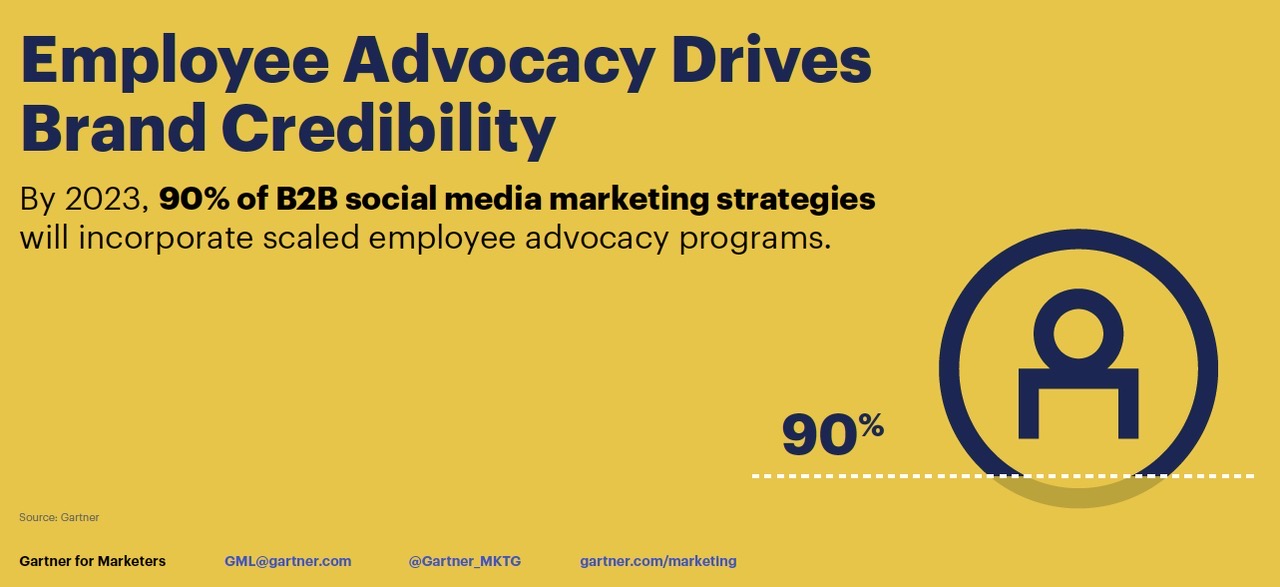The Executives Guide to Social Media
Introduction
In today's highly interconnected digital landscape, a robust social media presence is essential for organisations seeking to remain competitive. Those that excel on social media platforms have honed a strategic approach to building an authentic and memorable brand. This approach emphasises the importance of community, storytelling, engagement, and other key elements across various organisations, from startups and scale-ups to established public companies. Delve into the strategies that propel these organisations towards success, with real-world examples to illustrate each point. Assess whether your organisation is on track to meet the evolving expectations for employee advocacy.
The Significance of Visible and Engaged Leadership
Leaders who maintain a visible and engaged presence on social media platforms help humanise their brand and foster a sense of trust and credibility with their audience. By sharing company updates, engaging in conversations, and addressing concerns, executives can demonstrate transparency and become the embodiment of their company's values and mission. Example: Tesla's CEO, Elon Musk, frequently interacts with customers, investors, and the general public on Twitter, sharing updates on the company's progress, engaging in conversations, and even addressing concerns. This level of visibility and engagement helps to humanise the Tesla brand and fosters a sense of trust and credibility with its audience.
Fostering a Culture of Brand Ambassadorship Across the Organisation
As social media platforms evolve, businesses are recognising the power of employee advocacy in driving brand credibility. According to Gartner, by 2023, 90% of B2B social media marketing strategies will incorporate scaled employee advocacy programs. This shift towards employee advocacy highlights the importance of empowering employees to be brand ambassadors on platforms like LinkedIn. Example: Adobe encourages its employees to participate in their "#AdobeLife" campaign on social media, sharing their experiences working at the company. This initiative showcases Adobe’s positive work culture but also helps to amplify the brand’s reach and creates a more relatable image. 
Leveraging the Power of Storytelling and Value-Based Content
Organisations that stand out on social media platforms often focus on sharing content that tells a story and provides value to their audience. Companies can create a more memorable and lasting connection with their audience by showcasing authentic and engaging stories rather than relying on traditional advertising techniques. Example: Airbnb utilises storytelling by sharing user-generated content featuring unique travel experiences and accommodations on its social media platforms. This approach highlights the value of their platform by showcasing authentic and engaging stories rather than relying on traditional advertising techniques.
Utilising Data-Driven Insights for Content Optimization
Modern organisations are leveraging the power of data analytics to optimise their social media content, ensuring it resonates with their target audience. By analysing user behaviour, engagement patterns, and demographic insights, companies can tailor their content to maximise reach, relevance, and impact. Data-driven decision-making also allows organisations to measure the effectiveness of their campaigns, refine their strategies, and allocate resources more efficiently. Example: Netflix employs data analytics to identify content preferences and trends among its user base, allowing the company to develop and promote content that resonates with its audience. This data-driven approach ensures that Netflix's social media presence remains relevant and engaging.
Embracing the Potential of Multi-Platform and Cross-Channel Integration
Successful companies recognise that their audience is not confined to a single social media platform—even if some of us are die-hard LinkedIn devotees! By adopting a multi-platform approach and integrating their presence across various channels, they can reach a wider audience and establish a consistent brand image. Cross-channel integration also allows organisations to capitalise on each platform's unique features and strengths, fostering more dynamic and engaging content that caters to diverse user preferences. Example: Nike maintains a strong presence across multiple social media platforms, including Instagram, Twitter, and YouTube. They integrate their branding and messaging consistently across these channels, capitalising on each platform's unique features to engage their audience in various ways.
Prioritising Genuine Audience Engagement and Interaction
Organisations that stand out on social media do more than just post content; they actively engage with their audience by responding to comments, addressing concerns, and participating in relevant conversations. This genuine interaction humanises the brand and helps build stronger relationships and trust with the audience, increasing brand loyalty and fostering a sense of community. Example: Zappos, an online shoe retailer, is renowned for its exceptional customer service on social media. They actively engage with customers, responding to questions, addressing concerns, and even sharing lighthearted content. This genuine interaction has earned them a loyal customer base and a strong brand reputation.
Continual Adaptation to Evolving Trends and Technologies
In the ever-changing world of social media, staying ahead of the curve is crucial. Forward-thinking organisations continuously monitor emerging trends and technologies, adapting their strategies and content accordingly. By embracing new features, platforms, and creative formats, these companies demonstrate their commitment to innovation and maintain their relevance in the eyes of their audience. Example: Starbucks quickly embraced the rise of TikTok, creating a dedicated account to share engaging and entertaining content tailored to the platform's younger audience. By adapting to new trends and platforms, Starbucks continues to maintain its relevance and expand its reach.
Conclusion
Cultivating a robust social media presence in 2023 hinges on embracing the principles of authenticity, engagement, community building, and more. As businesses increasingly integrate employee advocacy into their social media marketing strategies, organisations that prioritise visible leadership, employee brand ambassadorship, value-driven storytelling, data-driven insights, multi-platform integration, genuine audience interaction, and adaptation to evolving trends are reaping the rewards of their efforts on platforms such as LinkedIn.
As we approach the predicted shift towards employee advocacy, evaluating your organisation’s current social media strategy is essential. Are you effectively leveraging your employees as brand ambassadors? Have you integrated employee advocacy into your social media marketing strategy to meet the 2023 benchmark set by Gartner? By adopting these strategies, as illustrated by the examples provided, organisations at various stages of development can establish a memorable, authentic brand that resonates with their target audience and distinguishes them from competitors.
